Since 1997, drivers have enjoyed better fuel economy, lower running costs and unrivalled levels of comfort and refinement thanks to Toyota’s hybrid technology. Today, Toyota’s range of hybrid cars encompasses small hybrids like the Toyota Yaris Hybrid, family size cars like the Toyota Prius, Corolla and Toyota C-HR, even estates like the Corolla Hybrid Touring Sports. But have you ever wondered how hybrid cars work?
Read on to discover exactly what Toyota’s hybrid drive system is, how it works and how it benefits the environment and your wallet.
What is a hybrid?
Simply put, a ‘hybrid’ is a vehicle with two or more power sources. Most hybrid road cars use a normal internal combustion engine paired with an electric motor, but the way these work together means that there are several different kinds of hybrid setup.
Beginning with the original Prius, Toyota pioneered the full hybrid system that uses two separate powerplants – a battery-powered electric motor and petrol-driven combustion engine – which can work together to drive the vehicle or can each be used in isolation. It is the most popular hybrid system in the world, and has sold more than 15 million units since the Prius was launched in Japan in August 1997.

The second kind of hybrid is known as parallel. It uses a normal combustion engine as the main source of power, with an electric motor fitted between the engine and gearbox to provide assistance. This arrangement tends to be more restricted in its function than a full hybrid, and fitting an electric motor into a very small space also limits its power and EV (electric vehicle) range.
Lastly, the third hybrid variation is the series type. In this type of vehicle the electric motor provides all the drive. The normal combustion engine isn’t connected to the transmission, and instead works as a generator to power the electric motor. The main hurdle for a series hybrid is maintaining its efficiency once the battery power has been used up. For this reason, series hybrids are rare.
Toyota hybrid – how does the system work?
Toyota’s hybrid drive system consists of six primary components: petrol engine, electric motor, electric generator, power control unit, and a power split device that uses a special type of gearbox to smoothly distribute power from the engine, motor and generator.
It is a clever, fuel-saving technology that can seamlessly and automatically switch between electric power and conventional engine power. Capable of adapting to different driving conditions, our hybrid system intelligently controls the power coming from both sources and tells the car how to combine them for the greatest efficiency and performance.
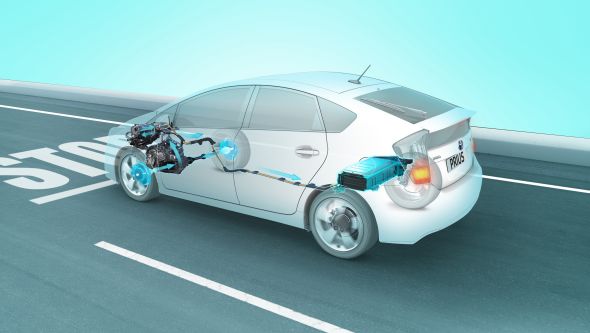
The system delivers true synergy between the two power sources. When the engine is running, it charges the battery via the generator; when driving conditions allow it, such as in slow-moving traffic, the generator can cut out the petrol engine and let the electric motor take over for zero-emissions travelling. The sophisticated engine management system can sense when the car is stopped and will switch off the engine to conserve power and cut emissions, automatically starting up again when needed.
The battery is kept well charged by the system, so a hybrid-powered Toyota won’t need to be plugged into a mains supply to be recharged.
However, Toyota does produce plug-in hybrid electric vehicles for people who can make use of its greater range of more than 30 miles in electric-only EV mode and cars which convert hydrogen into electricity. Read more about the different types of hybrid and electrified vehicle by clicking here.
How are the batteries charged?
Toyota’s hybrid system charges the battery in two ways. Firstly and as already mentioned, the petrol engine drives the generator to charge the battery. The second method is through regenerative braking, a system that puts braking energy to good use.
Every time you put your foot on the brake or lift off the accelerator, the system diverts energy back to the battery where it is, in effect, recycled. Instead of the energy being lost as heat or noise from the brakes, it is captured and then used to power the electric motor later. This is particularly efficient in stop-start traffic where the system recovers and stores a great deal of energy, making the car more efficient overall.
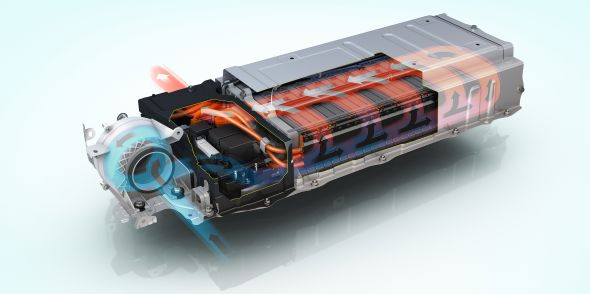
For a PHEV like the Prius Plug-in, the on-board battery can also be charged at home using the mains supply or at dedicated charging points along your journey, allowing the greater EV range of up to 30 miles.
How long do hybrid batteries last?
The batteries in Toyota’s hybrid vehicles are efficient, corrosion-resistant units designed to last, which is why Toyota’s standard battery warranty is five years or 100,000 miles and can be extended up to 15 years with no limit on total mileage – read more about this here.
The batteries are substantial units that have to store sufficient voltage to power the car with no assistance from the petrol engine. It’s true that their production does have a small, additional environmental impact, but this is more than offset by the environmental benefits of driving a hybrid car. In fact, we’ve dispelled that hybrid myth, along with others, in this post.
Toyota is also keen to recycle the batteries from its hybrid cars, which can be remanufactured to make new batteries or repurposed into other forms of stationary energy storage – this can be arranged through your Toyota dealer. We already recover over 90% of hybrid batteries from our vehicles, and are targeting a 100% recovery rate.
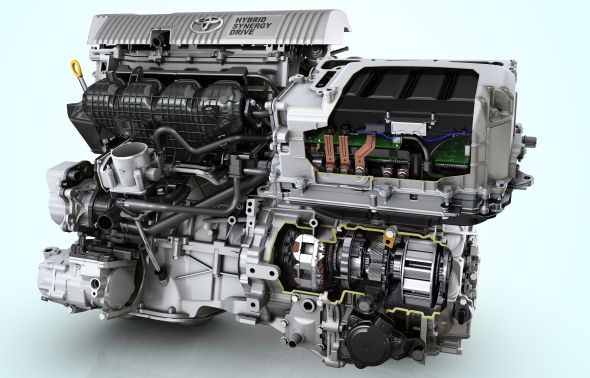
Is the engine different to that of a normal car?
In short, yes. The internal combustion engine used in a Toyota hybrid uses a slightly different engine cycle than the conventional Otto-type four-stroke cycle. Called the Atkinson cycle, this modified four-stroke cycle produces less heat and is therefore more efficient.
By cooling the internal combustion chamber using recirculated exhaust gases, it avoids a problem faced by engines with traditional cycles: injecting more fuel than necessary to reduce combustion temperatures and prevent the catalytic converters from overheating. The traditional remedy works, but uses more fuel in the process. However, Toyota’s solution is more fuel-efficient and is very reliable.
A more in-depth analysis of Toyota’s use of the Atkinson cycle can be read here.
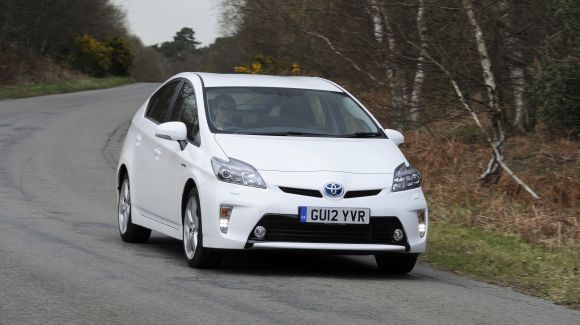
Do I have to drive differently to make the most of hybrid technology?
Not at all. Because Toyota has made the hybrid system fully automatic, it will optimise its operation and minimise fuel use for each driver. You can sit back and enjoy the drive!
You can read more about the experience of driving a Toyota hybrid by reading this article, in which motoring journalist Tim Dickson takes a Corolla Hybrid for a spin.
There are also some general tips, many of which apply to maximising the fuel economy of hybrid and non-hybrid cars alike, at this link.
To find out more about our complete range of hybrid vehicles, click here.
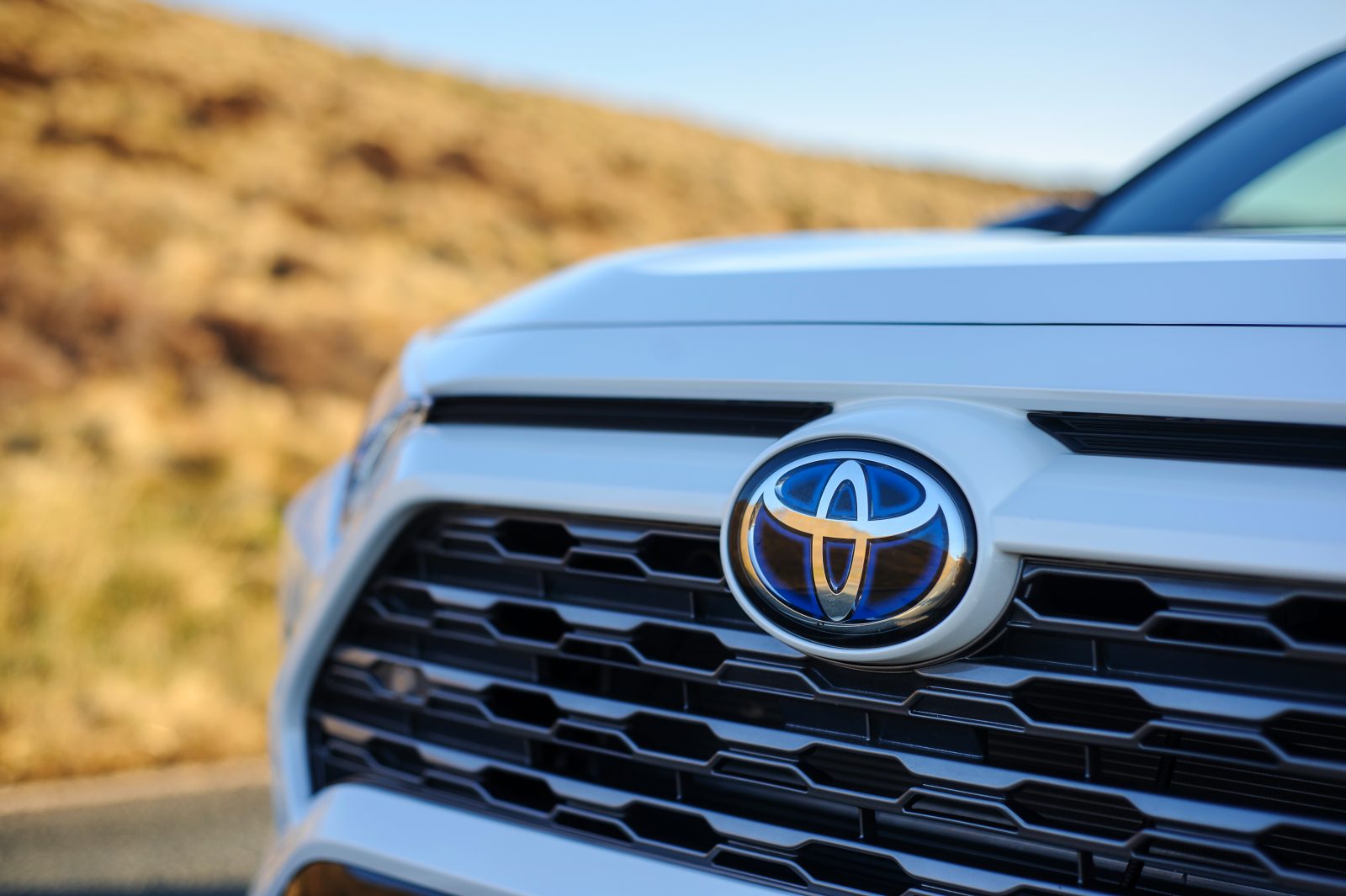




I feel that Toyota are fobbing people off regarding the 12v battery. The hybrid system won’t start if the 12 v battery is low, this is because Toyota have overdone the cost cutting and fitted a tiny 12v battery, and then failed to include an emergency link to the hybrid battery to start the car, as Hyundai have done. They then blame drivers for not making long enough journeys. Parking the car in P mode for an hour? really? Don’t be ridiculous, Toyota, it’s a design fault, sort it out.
This happened to me. I couldn’t start the car. The recovery service said the battery was faulty. The dealership made me pay for a new battery. I complained. They said the battery is only covered by the warranty if you drive at least 7000 miles; write to Toyota; we’re only doing as we’re told. Toyota said, contact the dealership, they make these decisions. The dealership said, contact Toyota… Eventually, I told Toyota I’d go public if they didn’t refund the cost of the new battery. They did. It was utterly ridiculous.
I had a lot of low battery problems with my 2024 Prius Prime. Once, after parking for 2 hours, I returned to a car that wouldn’t start. It currently disables a start if the 12V battery is just a bit low. At this point, you need either a boost, or a service call to the dealer, who would be happy to sell you a new battery I’m sure.
I consider it a design flaw that it won’t draw any power from the main hybrid battery when the 12V battery is too low to start the car. It needn’t draw down the hybrid battery too far by delivering a small charge to the 12V system.
I had my hybrid battery replaced under they hybrid health check warranty. 6 months late it has shown an error and need replacing. Would this be under manufacture warranty at the battery is 6 months old. My local dealership are saying it will need to be paid for to be replaced as there is no warranty.
Hi Adeel,
Thanks for your question.
Please provide the vehicle registration so we can check this for you.
Thanks.
My 2018 Hybryd key fob will not hold the battery charge. I have had to replace the battery twice in 3 weeks what is wrong?
Hi Hilary,
You would need to contact your local Toyota Centre so they can arrange investigating this for you.
Kind regards
I had same problems with my last Toyota. It turned out I was using cheap supermarket batteries.
You seam to have the best ideas and technology. Keep me posted.
It’s a great invention from Toyota at the time europeans were investing on diesel engines for better off powertrain efficiency
What’s the cost when you have to replace the batteries on a hybrid vechile
Toyota Hybrid, lost all confidence in my 18 month Toyota Yaris cross when it let me down badly when the battery would not start. Also my confidence further depleted when I was told by the Toyota dealer that I needed to do unecessary long runs to maintain the battery. My car was in use most days and at most is left unused for 1 day a week. With todays environmental issues it seems counter productive to advise that longer unecessary journey are required either that or to leave engine running before moving off which again is counter-productive to advice against theft of vehicle. Not impressed, shall go back to Hyundai which also provide 5 years breakdown cover aswell.
Hi Adrian,thanks for the comment.
We are sorry to read about your experience.
We have attached a link to an article which may assist with caring for your vehicle.
https://mag.toyota.co.uk/coronavirus-toyota-hybrid-car-maintenance/
Thanks,
Toyota UK.
A 12volt battery in good condition, even a relatively small one, should hold charge. If the battery is losing charge such that it does not have the ability to start the engine then the charge must be leaking away when the car is not in use. A common culprit can be the automatic interior lights which come on when a door is opened but has a delay before gradually fading to nothing, but the fading mechanism can continue to draw a very small current which can be enough to drain the 12 volt battery over several days. Try turning off the automatic setting of the interior cabin lights and see if this improves the situation. Also check for any other possible battery drain from items left connected to the 12 socket or the USB port.
Can you fix the battery issue. On the Yaris 2024 from going flat.is the battery to small.just fit a bigger battery
I have owned and driven only Toyota Hybrids since 2007. First a Prius T4, then an Auris Hybrid in 2014, now both a Prius T-Spirit and a Corolla Hybrid since 2022.
I love the reliability and good fuel economy of Toyota Hybrids.
On my wishlist for items I wish Toyota develops further are: a) a smoother ride and b) better performance – when I put my foot down, I wish the car would take off like greased lightning.
Then I would have the perfect car and I wouldn’t be tempted to look elsewhere to satisfy these cravings.
The problem with the 12 volt battery, simple place a full size battery under the bonnet, My Toyota workshop told me to I leave my car running all day or drive to god knows where to ensure the battery charges enough so that i can be sure that my car will start?
This has got to be a design fault.
Can I now charge the cost for the breakdown back to Toyota???
Thinking of buying leasing a Yaris Cross Hybrid to replace 20 year old Lancia. Never had an issue being away for 3+ weeks visiting grandchildren and starting the Lancia. Would I need to have someone run the Hybrid while I am away to keep battery charged?
Hi Ap,
Thanks for your comment.
As with any modern vehicle, if the car is not used very much then the battery will discharge over time.
A 12V battery trickle charger, or solar panel charger are good options to keep the battery fully charged whilst the vehicle is stationary for a period of time.
We hope this helps.
Thank you.
Hello, on a couple of occasions during a subzero period my Yaris Hybrid has failed to start. I connected my small home charger to the positive point in the fuse box and negative to earth. After a couple of hours it started. I read a lot of forums which sometimes include incorrect statements so could you clarify a few points. If the system won’t power up is it because the traction battery is low? The petrol engine is started by the motor/generators which are powered by the traction battery, correct? The 12v battery only powers door opening, lights, radio etc. correct? If 12 volts is low would that prevent power up? When I connect my home charger does it only charge 12v battery or traction battery as well? I’m not complaining, only interested in facts about the incredible hybrid system. Please comment.
Hello John,
Thanks for your comment.
Please may you provide your vehicle registration so we can assist further with this.
Thank you.